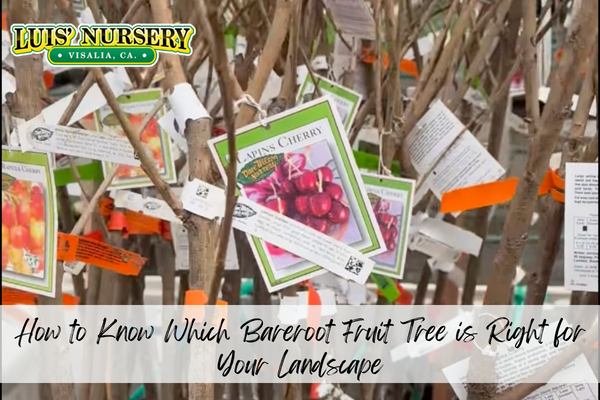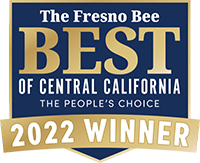You may have seen on Facebook that we now have our Bareroot fruit trees in stock this year. How exciting! You may have a vision of your own beautiful home orchard with its delicious bounty. Maybe your mouth is already watering dreaming up the many delectable culinary creations your harvest will facilitate. Delicious homemade pies, cobblers, and baskets of colorful fresh fruit. How do you know which trees in our inventory are right for you?
When should you buy your Bareroot fruit trees?
Right now, is the perfect time to select and plant your trees. Bare root season doesn’t last long, so now is the time! January until early March is when you should buy and plant your bare root trees. You need to plant your trees while they are still dormant and before their buds start to swell.
Do you know your zone?
Visalia and the San Joaquin Valley have a few zones depending on where exactly you live. The valley floor is zone 8, while the foothills are zone 7 and the citrus belt is zone 9. You will want to select a climate zone that is right for your specific area.
What are the average number of ‘chilling hours’ in your zone?
Most people are not going to know the answer to this question offhand, which is why it is helpful to speak to your local nursery. Chilling hours are necessary for the buds to bloom, set fruit and become a healthy grower. A chilling hour is below 45 degrees. Depending on which barefoot fruit trees you select, they could need from 200 to 2000 chilling hours to break dormancy effectively. Our valley floor usually averages 700-800 chilling hours in the winter, but this can fluctuate. Take a moment to check the trees information tag to see if it’s the right tree for your zone.
How is your tree pollinated?
Some trees are self-fertile and will provide a good fruit crop all on their own. Apricot, peach, quince, and nectarines are a few varieties that will pollinate flowers on its own tree. A self-fertile tree means you only need one tree in the garden. If you want to plant apples or pears, you will most likely need several varieties of apples to get the crop results you would like. These trees are cross-fertile, and one variety is pollinated by a different variety of the same fruit. You will want to make sure that your bloom times overlap.
Some apple trees have sterile pollen and will not pollinate themselves or other apple trees. They need pollen from another apple tree to produce fruit. You will need to provide it with a pollinizer variety. We do get a little help from nature when we attract pollinators to our garden such as bees. They are attracted to fruit tree blossoms and will spread the pollen from tree to tree.
Know your space requirements
How much space does your Bareroot tree need? You will need to consider how tall you would like your tree to be. Usually, home orchards keep trees around 12-16 feet in height. Depending on your backyard orchard culture you will want to make sure you have adequate spacing of usually 12-16 feet apart.
Talk to your local nursery
Your local nursey will know your climate zone and know the best varieties for our area. Rather than risking ordering from a mail catalog you can pick it up yourself and inspect them for fresh moist roots and avoid root-bound trees.
Come on out to Luis Nursery and check out our inventory. We are happy to help you find the right tree for you!



